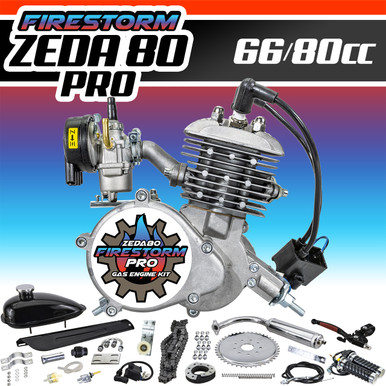Zeda 80 has recently come out with its "Pro" edition,
Your source for 2-Stroke and 4-Stroke Bicycle Engine Kits, Performance Parts, and Accessories!

www.bicycle-engines.com
2 spark plugs with a dual spark CDI unit.
I'm looking for the more experienced one's here in the forums to tell me if i'm right or wrong in suspecting this is just another "gimmick" like so many other things that have been "offered" 2 stroke users over the years claiming more torque and better high end speed etc. etc. etc. "ad nauseam".
I cannot see how you achieve much better spark when your still working off the same basic magneto's supplying electrical power to the dual spark CDI unit...I suspect that the spark would actually be weaker between 2 plugs rather than just one.
(It is the very same "improved", "upgraded", magneto that comes with the regular, stock Zeda 80, single spark plug kit)
So what do you more experienced folks that have either played with these or know the basic theory or practical application behind this possible "innovative" design have to say about these things that seems to be abounding as of late???...Just more "snake oil"???...Any "Myth Busters" here???...lol...TY...DAMIEN

